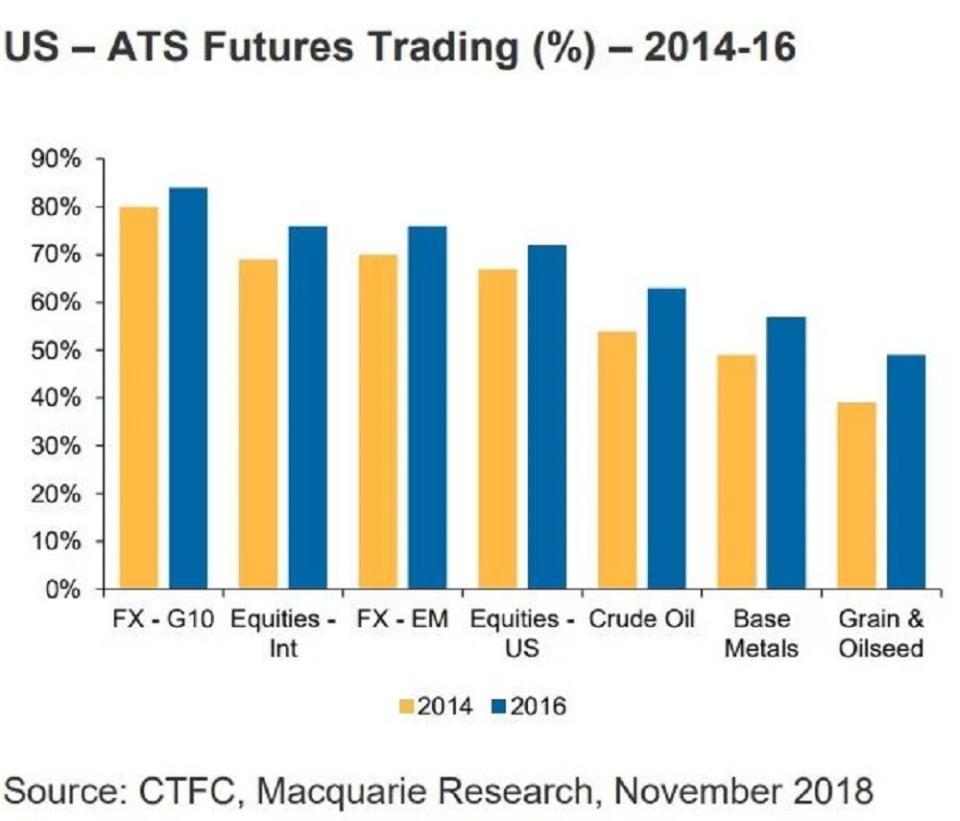RISE OF THE MACHINES: Why automated trading could create problems down the line

http://www.amazon.com/Terminator-Machines-Two-Disc-Widescreen-Edition/dp/B00005JM0B
The use of automated trading in financial markets is only getting larger. With machines now increasingly trading with each other, investment decisions are now being taken in nanoseconds. Given the influence financial markets have on the real economy, will the rise of automated trading make life easier for people or lead to the potential for policy mistakes and hardship? The use of machines in financial markets is only getting more prolific, replacing humans in everyday investment decisions.
Just take a look at the chart below from Macquarie Bank showing the volume of transactions conducted by automated trading strategies (ATS) based on latest data released by the US Commodity Futures Trading Commission (CFTC).

Macquarie Bank
No matter the asset class, the dominance of algorithmic trading continues to grow.
“ATS accounts for 72% of trading in US equity indices, 75% of International equities indices, 84% of G10 currencies and 70% US Treasuries, almost 60% of base metals and 65% of crude oil,” Macquarie says.
With machines now increasing trading between themselves, taking the human element of investment decisions, Macquarie asks the valid question: do fundamentals actually matter anymore?
“Although it is true that people design rules that machines follow, machine learning is proliferating and hence direct human contribution is falling,” Macquarie says.
“It also eliminates human ‘hesitancy’ and ‘thought’, with crowded repricing done in split seconds — in either direction — and hence 5% plus moves are now the new 1%.
“It explains how something that was good yesterday becomes bad today.”
Not only does that create the potential for short bouts of increased volatility across asset classes, Macquarie says it creates a scenario where policy announcements are dictated to drive the reaction of the machines, rather than human behaviour.
“This has major policy implications, as asset prices have emerged as the key variable driving real economy decisions, from consumption to investments,” Macquarie says.
“When the Fed talks to the market, it is no longer targeting humans but rather it aims to trigger machines and steer trades.”
Given there’s no sign of automation slowing down across financial markets, one has to wonder whether allowing machines to dictate both asset price valuations and economic policy is a wise path to go down.
Will it make life easier for people or lead to policy mistakes and hardship?
An interesting question worth pondering.
See Also:

 Yahoo News
Yahoo News 

